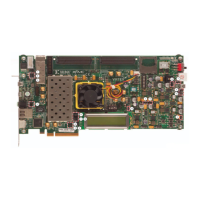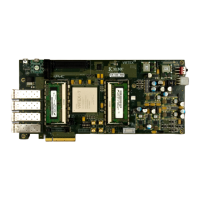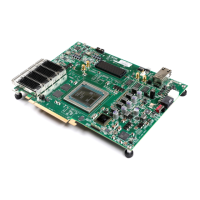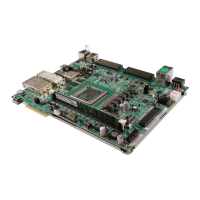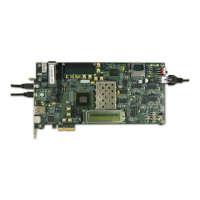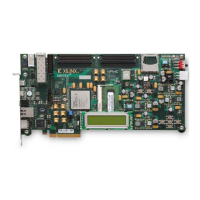Embedded Tri-Mode Ethernet MAC User Guide www.xilinx.com 153
UG074 (v2.2) February 22, 2010
Auto-Negotiation Interrupt
R
• The PHY then passes the results of the auto-negotiation process with the link partner
to the Ethernet 1000BASE-X PCS/PMA or SGMII (in SGMII mode), by leveraging the
1000BASE-X auto-negotiation specification shown in Figure 5-3. This transfers the
results of the Link Partner auto-negotiation across the SGMII and this is the only auto-
negotiation observed by the sub-layer.
The SGMII auto-negotiation function leverages the 1000BASE-X PCS/PMA auto-
negotiation function with the exception of:
• The duration of the Link Timer of the SGMII auto-negotiation decreases from 10 ms to
1.6 ms making the entire auto-negotiation cycle faster (see “Auto-Negotiation Link
Timer,” page 153).
• The information exchanged now contains speed resolution in addition to duplex
mode.
The results of SGMII auto-negotiation can be used as described in “1000BASE-X Auto-
Negotiation Overview,” page 151.
Auto-Negotiation Link Timer
The built-in auto-negotiation Link Timer has different durations for different standards.
1000BASE-X Standard
The 1000BASE-X standard Link Timer is defined as having a duration somewhere between
10.354 ms and 10.387 ms.
SGMII Standard
The SGMII standard Link Timer is defined as having a duration of 1.606 ms to 1.638 ms.
Using the Auto-Negotiation Interrupt
The auto-negotiation function has an EMAC#CLIENTANINTERRUPT port. This port is
designed to be used with common microprocessor bus architectures (for example, the
CoreConnect™ bus interfacing to a MicroBlaze design or the PPC405 processor
implemented in the Virtex-4 device).
The operation of this port is enabled or disabled and cleared via Register 16 (see Table 4-19,
“Vendor-Specific Register: Auto-Negotiation Interrupt Control Register (Register 16)”).
• When disabled, this port is permanently driven Low.
• When enabled, this port is set to logic 1 following the completion of an auto-
negotiation cycle. It remains high until cleared after a zero is written to bit 16.1
(Interrupt Status bit) of Register 16.
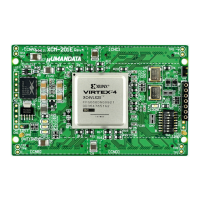
